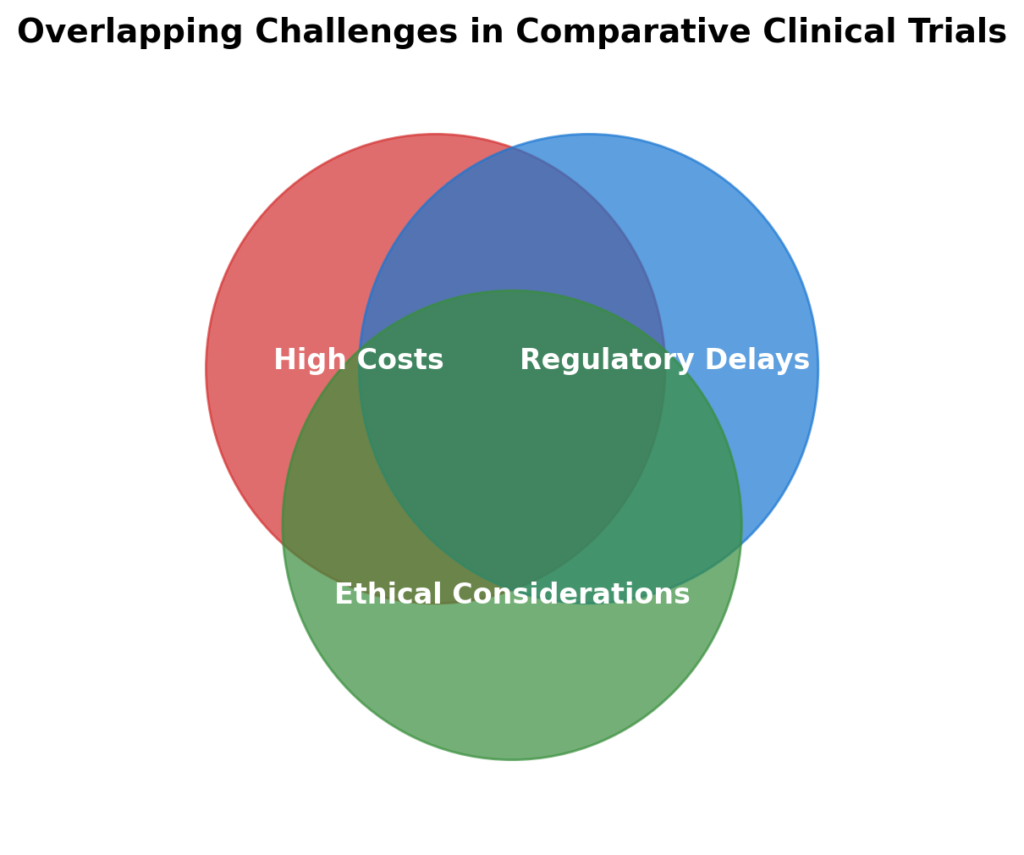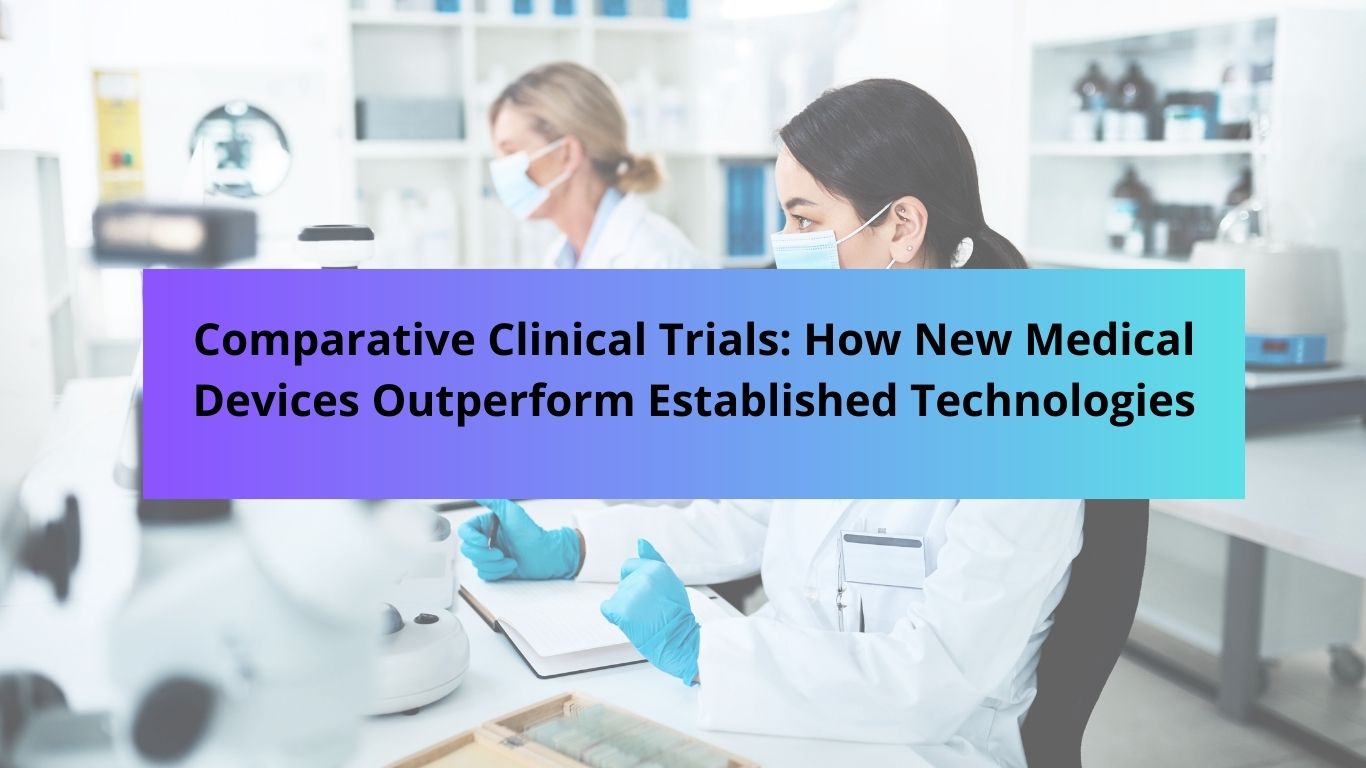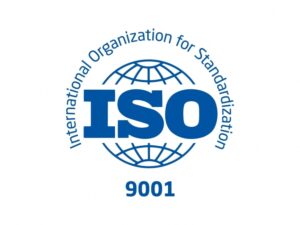Introduction
In the ever-evolving world of medical technology, innovation is key to improving patient outcomes and healthcare efficiency. However, proving that a new medical device is superior to an existing one requires rigorous scientific validation. This is where comparative clinical trials play a crucial role. By comparing novel medical devices with established technologies, researchers can demonstrate improved safety, efficacy, and overall performance.
In this blog, we explore the power of comparative clinical trials, how they shape the future of medical device adoption, the key advantages of innovative technologies, and how new breakthroughs are revolutionizing healthcare.
What Are Comparative Clinical Trials?
Comparative clinical trials (CCTs) are studies designed to evaluate the performance of a new medical device against an existing standard-of-care device. Unlike traditional clinical trials that focus solely on safety and effectiveness, CCTs provide head-to-head comparisons, enabling healthcare providers and regulators to make informed decisions.
Key features of comparative clinical trials:
✔ Direct performance comparison between devices with similar intended uses.
✔ Randomized controlled trial (RCT) designs to minimize bias.
✔ Objective performance metrics, such as usability, efficacy, and patient safety.
✔ Post-market surveillance integration for long-term effectiveness assessment.
Why Are Comparative Clinical Trials Game-Changers?
🚀 Validation of Next-Gen Technologies
- Manufacturers must prove that their innovation provides a measurable and clinically significant benefit over existing solutions.
- Regulatory bodies like FDA (U.S.), CDSCO (India), and EMA (Europe) demand robust comparative data for approval.
💡 Enhanced Patient Outcomes
- Trials assess whether new devices reduce recovery times, minimize complications, and improve overall patient well-being.
📈 Market and Regulatory Acceptance
- Strong clinical evidence accelerates market entry, regulatory approvals, and insurance reimbursements.
🏆 Competitive Edge for Manufacturers
- Companies investing in comparative trials gain a stronger market position, higher credibility, and increased adoption in hospitals and clinics.
The Secret Behind New Medical Devices Outperforming Established Technologies
🔬 Advanced Materials and Biocompatibility
- Modern devices use cutting-edge biomaterials, such as graphene coatings, bioresorbable polymers, and nanotechnology, for improved safety and durability.
- Example: Graphene-infused orthopedic implants promote faster healing and reduce inflammation compared to traditional titanium implants.
🤖 AI-Powered and Smart Technologies
- Devices integrated with Artificial Intelligence (AI) and machine learning (ML) revolutionize diagnostics and real-time patient monitoring.
- Example: AI-powered SaMD (Software as a Medical Device) enhances imaging precision, outperforming conventional techniques.

🔍 Minimally Invasive Innovations
- New medical devices prioritize less invasive procedures, leading to quicker patient recovery and shorter hospital stays.
- Example: Micro Incision Glaucoma Surgery (MIGS) surpasses traditional glaucoma procedures in speed and safety.
🎯 Ergonomic and User-Friendly Designs
- Medical devices are now designed with effortless usability, making them more accessible to healthcare professionals and reducing the learning curve.
- Example: Automated insulin delivery systems enhance precision and ease compared to older pumps.
Regulatory Considerations for Comparative Clinical Trials
Each regulatory authority has distinct requirements for comparative trials:
✔ FDA (U.S.): Emphasizes robust clinical study data and post-market surveillance to confirm superiority.
✔ EUMDR (Europe): Requires clinical evaluation reports (CER) and post-market clinical follow-up (PMCF).
✔ CDSCO (India): Mandates comparative efficacy studies before granting approval for new medical devices.
Overcoming Challenges in Comparative Clinical Trials
🔹 High Costs: Investing in high-quality comparative trials requires significant resources, but the payoff is substantial.
🔹 Regulatory Delays: Extensive approvals can slow down market entry, making proactive regulatory planning essential.
🔹 Ethical Considerations: Ensuring patient safety and transparency is paramount when testing new vs. older technologies.

Conclusion
Comparative clinical trials are the gold standard for proving that new medical devices are not just different but better, safer, and more effective. As regulatory bodies increasingly emphasize comparative evidence, manufacturers must prioritize well-designed trials to gain market approval and build trust among healthcare professionals.
The future of medical technology is bright, dynamic, and innovation-driven—and comparative clinical trials are paving the way for safer and more effective healthcare solutions.
Partner with Bioexcel
At Bioexcel, we specialize in regulatory support, clinical validation, and comparative trials for medical device companies. If you’re looking to conduct a comparative clinical trial for your innovative device, contact us today to accelerate your path to approval and market success!












